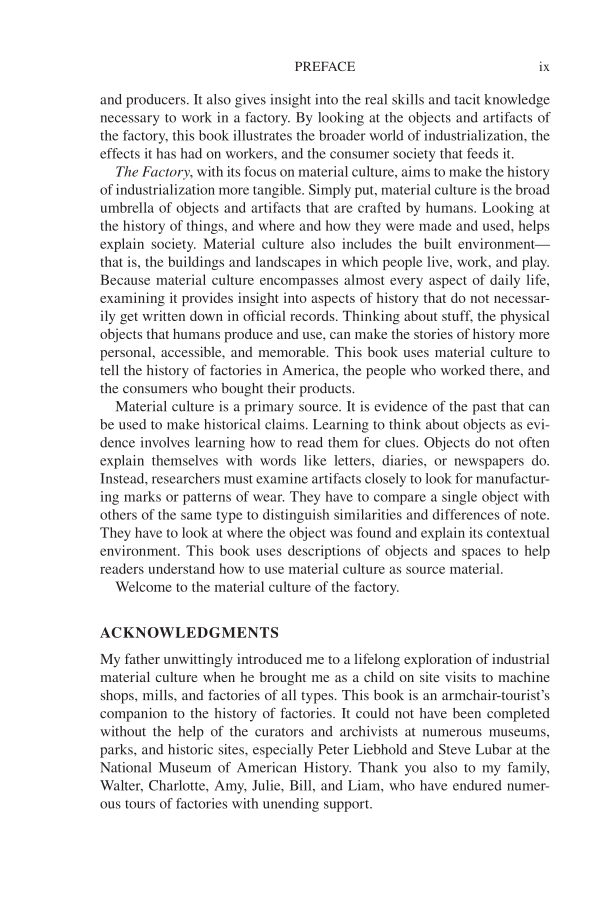PREFACE ix and producers. It also gives insight into the real skills and tacit knowledge necessary to work in a factory. By looking at the objects and artifacts of the factory, this book illustrates the broader world of industrialization, the effects it has had on workers, and the consumer society that feeds it. The Factory, with its focus on material culture, aims to make the history of industrialization more tangible. Simply put, material culture is the broad umbrella of objects and artifacts that are crafted by humans. Looking at the history of things, and where and how they were made and used, helps explain society. Material culture also includes the built environment— that is, the buildings and landscapes in which people live, work, and play. Because material culture encompasses almost every aspect of daily life, examining it provides insight into aspects of history that do not necessar- ily get written down in official records. Thinking about stuff, the physical objects that humans produce and use, can make the stories of history more personal, accessible, and memorable. This book uses material culture to tell the history of factories in America, the people who worked there, and the consumers who bought their products. Material culture is a primary source. It is evidence of the past that can be used to make historical claims. Learning to think about objects as evi- dence involves learning how to read them for clues. Objects do not often explain themselves with words like letters, diaries, or newspapers do. Instead, researchers must examine artifacts closely to look for manufactur- ing marks or patterns of wear. They have to compare a single object with others of the same type to distinguish similarities and differences of note. They have to look at where the object was found and explain its contextual environment. This book uses descriptions of objects and spaces to help readers understand how to use material culture as source material. Welcome to the material culture of the factory. ACKNOWLEDGMENTS My father unwittingly introduced me to a lifelong exploration of industrial material culture when he brought me as a child on site visits to machine shops, mills, and factories of all types. This book is an armchair-tourist’s companion to the history of factories. It could not have been completed without the help of the curators and archivists at numerous museums, parks, and historic sites, especially Peter Liebhold and Steve Lubar at the National Museum of American History. Thank you also to my family, Walter, Charlotte, Amy, Julie, Bill, and Liam, who have endured numer- ous tours of factories with unending support.
Document Details My Account Print multiple pages
Print
You have printed 0 times in the last 24 hours.
Your print count will reset on at .
You may print 0 more time(s) before then.
You may print a maximum of 0 pages at a time.






































































































































































































